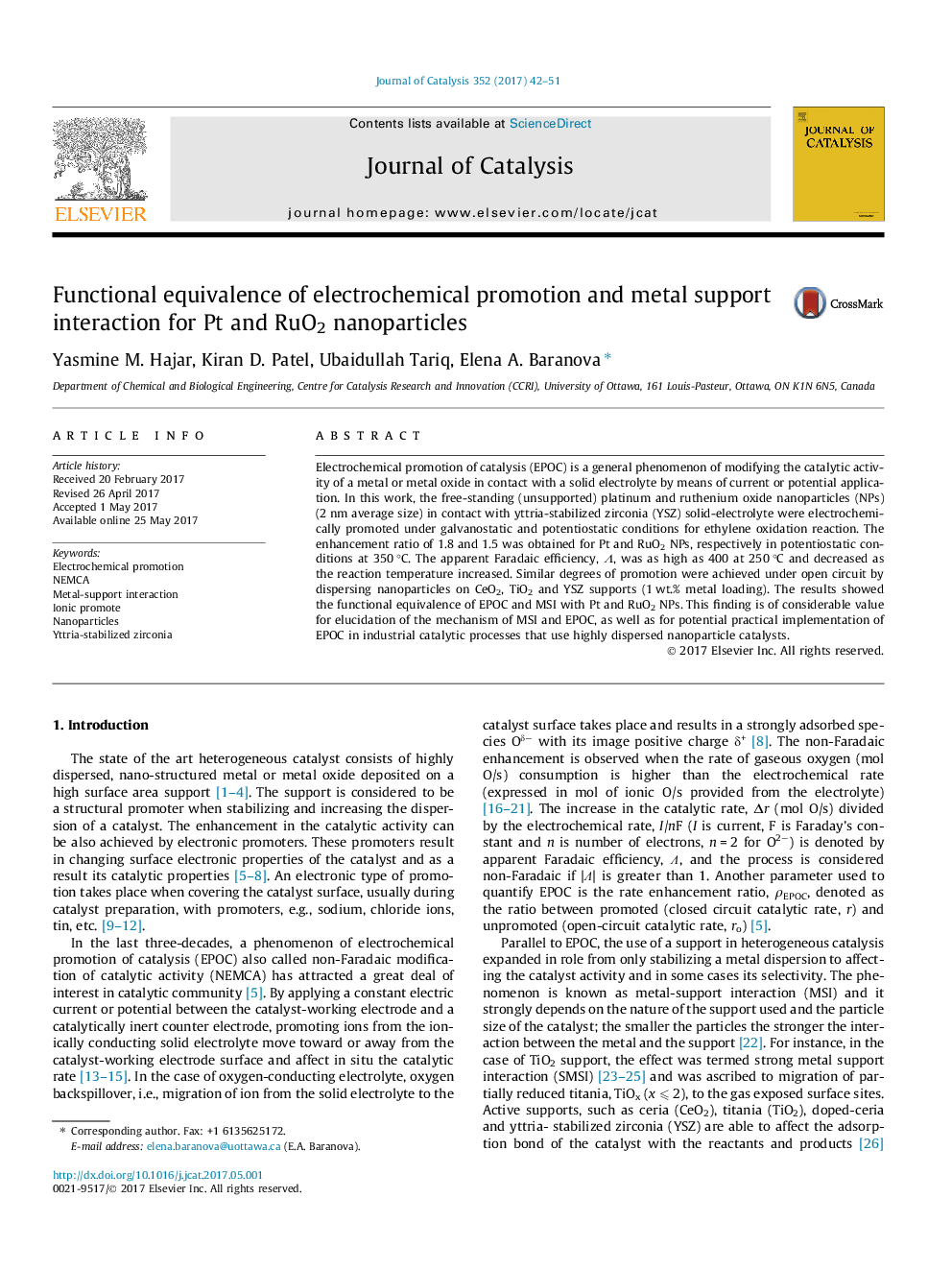| Article ID | Journal | Published Year | Pages | File Type |
|---|---|---|---|---|
| 6455332 | Journal of Catalysis | 2017 | 10 Pages |
â¢Pt and RuO2 nanoparticles deposited on YSZ were electrochemically promoted.â¢Positive polarization resulted in non-faradaic reaction rate increase.â¢The nanoparticles were also supported, with a 1 wt.% loading, on CeO2, TiO2 and YSZ.â¢The enhancement ratios from MSI and EPOC phenomena were compared.â¢Similar promotion achieved via potential application and metal-support interaction.
Electrochemical promotion of catalysis (EPOC) is a general phenomenon of modifying the catalytic activity of a metal or metal oxide in contact with a solid electrolyte by means of current or potential application. In this work, the free-standing (unsupported) platinum and ruthenium oxide nanoparticles (NPs) (2 nm average size) in contact with yttria-stabilized zirconia (YSZ) solid-electrolyte were electrochemically promoted under galvanostatic and potentiostatic conditions for ethylene oxidation reaction. The enhancement ratio of 1.8 and 1.5 was obtained for Pt and RuO2 NPs, respectively in potentiostatic conditions at 350 °C. The apparent Faradaic efficiency, Î, was as high as 400 at 250 °C and decreased as the reaction temperature increased. Similar degrees of promotion were achieved under open circuit by dispersing nanoparticles on CeO2, TiO2 and YSZ supports (1 wt.% metal loading). The results showed the functional equivalence of EPOC and MSI with Pt and RuO2 NPs. This finding is of considerable value for elucidation of the mechanism of MSI and EPOC, as well as for potential practical implementation of EPOC in industrial catalytic processes that use highly dispersed nanoparticle catalysts.
Graphical abstractDownload high-res image (86KB)Download full-size image
